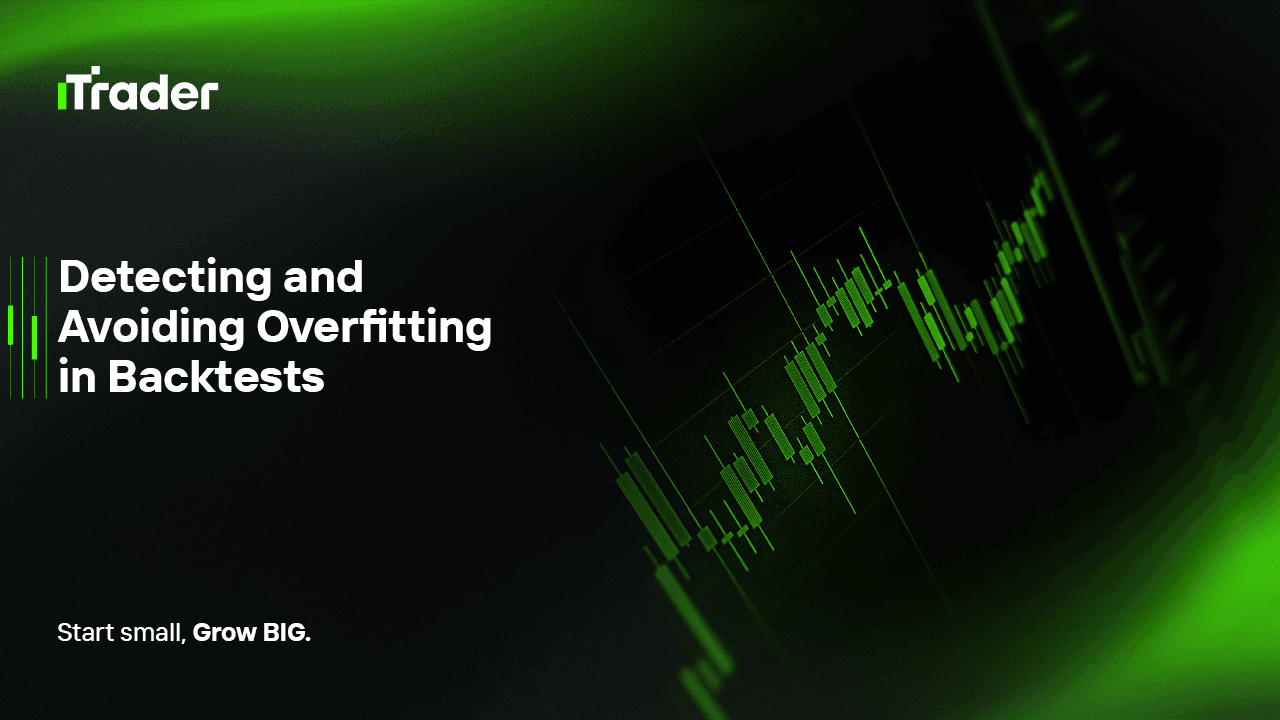2025-09-01
Backtesting is one of the most powerful tools available to traders and system developers. It allows you to evaluate whether your trading idea would have worked in the past, giving a degree of confidence about how it might perform in the future. However, backtesting also carries a hidden danger: overfitting.

Overfitting occurs when a strategy is optimized to perform exceptionally well on historical data but fails when exposed to new market conditions. For prop traders, whose capital allocation and career opportunities depend on proving the robustness of their strategies, avoiding overfitting is not just a technical detail—it is a survival necessity.
This blog will examine the nature of overfitting in backtesting, why it poses serious risks, and how prop traders can systematically protect themselves from this pitfall.
Overfitting happens when a model or trading system becomes overly tuned to past data. In practice, this means your strategy is not capturing genuine market structure but rather random noise.
For example, imagine you design a moving average crossover system and then spend hours adjusting parameters until the equity curve looks perfect. If the rules are too specific—say, a 47-period MA crossing a 113-period MA only under certain market hours—the system might fit past data exceptionally but will likely fail in live markets.
Overfitting gives a false sense of security. The equity curve may look smooth, the drawdowns minimal, and the profit factor high, but all of it is an illusion built on hindsight.
For independent traders, overfitting is already a risk. For prop traders, however, the stakes are much higher:
In short, overfitting is not just a statistical issue. It can destroy a trader’s chance at a career within prop trading.
Recognizing overfitting early can save time and resources. Some warning signs include:
If a backtest seems “too good to be true,” it probably is.
The more parameters your strategy has, the more opportunities for overfitting. Simple strategies with clear logic tend to generalize better. For example, a moving average crossover with one or two filters is less prone to overfitting than a system with ten interdependent conditions.
Always divide your data into in-sample (for model development) and out-of-sample (for validation). A robust system should perform reasonably well on both. If it collapses out-of-sample, it is overfit.
Instead of a single backtest, perform multiple rolling optimizations and validations. This simulates live conditions and shows how the strategy adapts across different market environments.
Every trading rule should have a rationale. For example, trend-following systems should work because of market momentum, not because “it looked good” in historical data. If you cannot explain why a rule works in economic terms, it is probably a curve-fit artifact.
Testing hundreds of indicators and parameter combinations increases the chance of finding a false positive. Limit the number of tests and ensure that results make sense outside of statistics.
Borrowed from machine learning, cross-validation splits data into multiple folds. Each fold is tested separately to see if performance is consistent. This reduces the likelihood of tailoring a model to one specific dataset.
Randomizing the order of trades in backtests helps reveal whether performance depends on a lucky sequence of wins and losses. If results remain stable under randomization, the system is more robust.
By resampling historical returns, bootstrapping allows you to see how sensitive the strategy is to variations in the dataset. Stable results indicate lower overfitting risk.
In algorithmic models, regularization techniques penalize complexity. This prevents the system from placing too much weight on minor historical anomalies.
Overfitting is not just a technical issue; it is also psychological. Traders often fall into these traps:
Being aware of these biases is the first step to avoiding them.
Prop traders can follow a structured workflow to reduce overfitting risk:
Prop firms don’t expect perfection. They expect robustness. This means:
The goal is not to eliminate all losing trades but to show consistent decision-making under varied conditions.
Overfitting in backtesting is one of the biggest threats to prop traders. A strategy that looks flawless on paper can quickly collapse in live trading, leading to wasted time, lost opportunities, and failed evaluations.
The solution is not to abandon backtesting but to use it wisely. By keeping strategies simple, validating them across different datasets, applying robustness tests, and grounding every rule in sound market logic, traders can avoid the trap of overfitting.
For prop traders, the ability to prove that your strategy can withstand real market conditions is the ultimate edge. A robust but imperfect system will always outperform a fragile curve-fitted one in the long run.
© 2025 iTrader Global Limited | 公司注册号 15962
iTrader Global Limited 位于科摩罗联盟安儒昂自治岛穆察姆杜 Hamchako,并受科摩罗证券委员会(Securities Commission of the Comoros)许可及监管。我们的牌照号为 L15962/ITGL。
iTrader Global Limited 以“iTrader”作为交易名称,获授权从事外汇交易业务。公司的标志、商标及网站均为 iTrader Global Limited 的专属财产。
风险提示: 差价合约(CFD)交易因杠杆作用存在高风险,可能导致资金快速亏损,并非适合所有投资者。
交易资金、差价合约及其他高杠杆产品需要具备专业知识。
研究显示,84.01% 使用杠杆的交易者会遭受亏损。请务必充分了解相关风险,并确认在交易前已做好承担资金损失的准备。
iTrader 特此声明,不会对任何个人或法人在杠杆交易中产生的风险、亏损或其他损失承担全部责任。
本网站提供的新闻及信息仅用于教育目的。用户应独立且审慎地作出金融决策。
限制条款: iTrader 不会向法律、法规或政策禁止此类活动的国家或地区居民提供本网站或相关服务。若您居住在限制使用本网站或服务的司法管辖区,您有责任确保遵守当地法律。iTrader 不保证其网站内容在所有司法管辖区均适用或合法。
iTrader Global Limited 不向以下国家/地区的公民提供服务,包括但不限于:美国、巴西、加拿大、以色列及伊朗。